This is the accordion the innkeeper played to entertain his guests and family and friends on the long, cold winter nights in his faraway land. When the never-ending days of summer came, he played the accordion late into the night for the dances on the village green. On one such summer day in early June, when the sun barely set in this northern clime, the innkeeper and his young wife welcomed a baby boy into their lives. The date of the boy's birth, June 6, would become one of the most memorable days in history...not because it was the boy's birthday, but because of what would happen on that day fourteen years later. This boy was born into a musical family: his father, the innkeeper, played numerous instruments, all self-taught, and his mother had a beautiful singing voice. He was born in a musical country, where song and dance are revered and celebrated. He grew surrounded by music, and soon he too wanted to play. 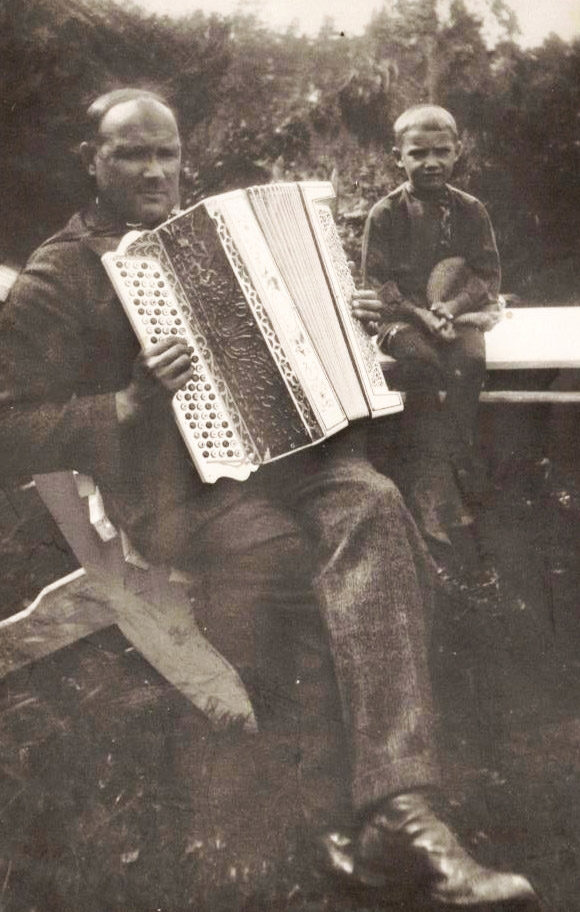
In 1939 began the years of fear and torment and death. This is the accordion the boy refused to leave behind when his father woke him before dawn one chilly September morning in 1944 and said, "Pack your clothes...we're leaving." With the accordion in one hand and a small suitcase in the other, the boy climbed into the back of a farm truck with his mother and father and headed to the port. The boy's mother turned to lock the door, but her husband stopped her, saying, "Leave it, there is no point." They managed to board one of the last retreating German troop ships and waited in the harbor until first light to make their escape. During the night, the boy stood on deck and bade farewell to his country, to his beloved capitol city. He watched the flames as the Red Army bombed, burned and occupied Tallinn. This is the accordion the boy played to raise the spirits of his fellow refugees on a stormy passage to a bombed-out Berlin. This is the accordion, which the youth of fourteen, now separated by war from both his mother and father, dragged across Europe with a rag tag group of Estonian boys, who fled from conscription in the German army. Their goal: to find the Americans. When luck was with them, they hitched rides with friendly farmers, slept in barns, and in the fields they ate potatoes missed in the fall harvest. By some miracle, the boy found his mother already living in a refugee camp in the western sector of Germany. Some months later, his father, who escaped from a prison train bound for Siberia, wandered into the camp, as well. Still in his forties, the boy's father was a broken man, his health and spirit ruined by the horrors he had endured. This is the accordion that played somberly at the funeral of the innkeeper, for he died shortly after the happy reunion; he had a heart attack while swimming in the river nearby. The teenage boy and his mother lived together for months and years in the crowded camps, sharing cramped quarters and limited food with fellow countrymen. The American officers administering the camps told them, "Go home! The war is over!" But to return home was certain imprisonment or death. They dreamed of the day when they might receive word of permission to emigrate to Canada or Australia or America. Meanwhile, professors among the refugees organized schools so the boy could complete his education, pastors led worship services, seamstresses sewed clothes, doctors ministered to the sick. And the boy? He organized a dance band, led by this old accordion. After five long years, word came, papers arrived: they could finally leave for America! Now the young man of nineteen found himself at sea once again, and again separated from his mother. This is the accordion he played on the long, stormy voyage to New York to console himself and fellow passengers. He occupied his time practicing and learning to play bridge. He landed in America with three dollars in his pocket and a train ticket to Minneapolis, where he was met at the station by a farmer in overalls, his sponsor. They drove for hours in a rickety old truck to the far north-western corner of Minnesota, where the land was flat and bare and the cold wind howled. The young musician was to become a farmer: milk the cows, slop the pigs. He lasted less than 3 months. With a promise to the farmer to return for spring planting, the young man boarded a Greyhound and headed for Olympia, Washington and a Christmas reunion with his mother. In the luggage rack of the Greyhound was this old accordion. This is the accordion the young man played to land his first real job and begin a new life in America. Someone from the local service club had heard of the young accordionist from Estonia. He was invited to play and tell his story at the club meeting. The Olympia city engineer happened to be there and asked the young man if he needed work. Installing traffic lights seemed much more appealing than picking berries and broccoli from dawn til dusk, as other Estonians did. The young man had never done such work, but the engineer assured him that he could be trained and even invited him to live in his home. With a few dollars in his pocket, the young man strolled the streets of Seattle one day, dreaming of going to college, maybe to study medicine or architecture. Suddenly something caught his eye. Could it really be? An accordion shop? He ogled a shiny new instrument displayed in the window. What a beauty it was! He knew he could never afford it, but maybe he could just have a look. He drew up his courage and walked into the shop and pointed out the accordion. "Would you like to play it?" the shopkeeper asked. 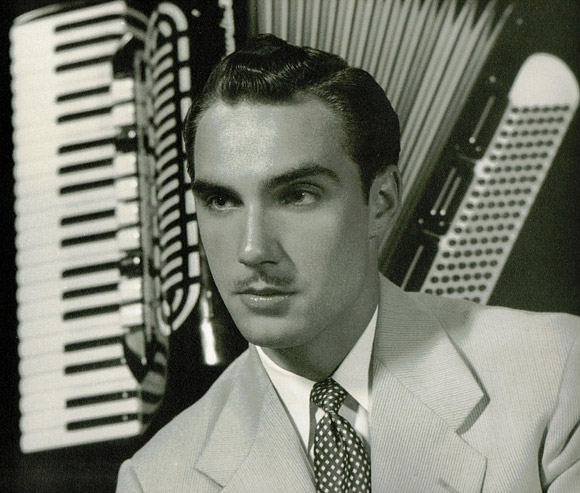 As the young man eagerly played a favorite Estonian tune, a booming voice sounded from the back room: "Who is that playing out there? Get him in here!" "I need teachers," the owner continued when he saw the young man, "and you are going to teach for me!" "But I don't know how to teach," the young man protested. "If you can play like that, you can teach!" the owner replied. Every good teacher knows this is far from the truth, but it was true in the case of the young man, and thus began his career as one of the finest accordion teachers in the US and, indeed, the world. This is the old accordion he played to inspire and teach his students. In the early 1950's the accordion was a very popular instrument in America. The GIs returned from Europe in love with the music of the accordion. They wanted their kids to learn to play. It didn't take the young man long to realize that an accordion studio was a money-making enterprise. He soon struck out on his own. Together with the studio manager from Seattle, he opened Accordia Nova in Spokane. Within months, using cold-calling and musical aptitude tests to recruit, they had hundreds of students. They traveled the back roads around Spokane, signing up students and selling instruments for the farmers' kids. Life in America was turning out okay. In 1955, the young man of 25 was able to buy a small house and marry the love of his life Lehta, his Dolly. Dolly was also Estonian and had also survived the hardships of war. They met at an Estonian celebration in Portland. All at once, he became a husband and a father to Dolly's small daughter Linda. The young couple worked hard and struggled to adapt to a new culture. With time and perseverance, they gained security and a modest prosperity. The teacher was now able to buy that shiny new instrument, but this old accordion took pride of place in the display at the studio. In February of 1964 the accordion world was dealt a devastating blow in the form of four mop-haired boys from Liverpool, who performed on the Ed Sullivan Show. Overnight, the accordion was dead and guitar was king. Enrollment at Accordia Nova plummeted. This door was closing, but a new door opened with the launch of Sputnik, the space race and the Cold War. Suddenly language teachers were in demand, and this man could teach and he knew languages. School District 81 in Spokane signed him up to teach German and Russian and Latin. He worked all day in the high schools of Spokane and worked evenings and weekends keeping his beloved studio alive. And somehow in these busy years he found the time to pursue his dream of a university education, earning first a bachelor's degree at Eastern Washington University and then a master's at the University of Washington. 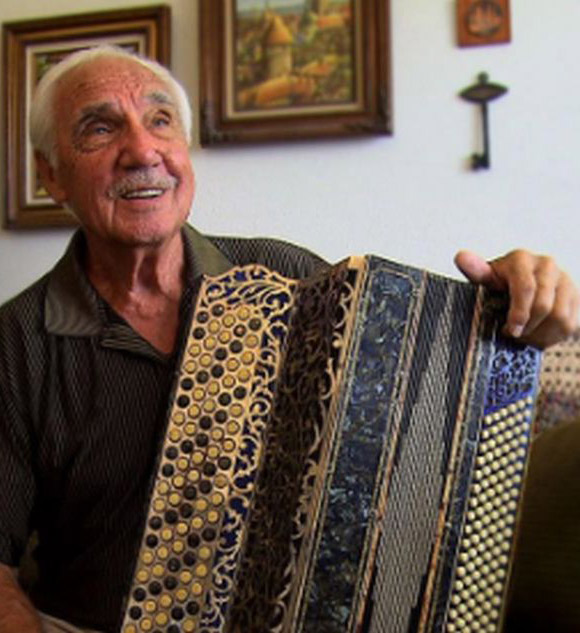
This old accordion, sitting high on a shelf at the studio, witnessed a long parade of students over the years. They came at all ages and abilities, some very talented, some not. A handful, with the loving prodding and coaching of their teacher, reached world-class status. The special gift of this teacher is to discover the specific challenges each student faces and find a way to conquer them. His students were and are family to him. He and Dolly spent long hours at the studio and long hours on the road, judging the competitions, attending the festivals and concerts, and always, always offering encouragement and support. He taught for free when they couldn't pay, he found them instruments when they couldn't afford to buy. He created the Spokane Accordion Ensemble, one of the early accordion orchestras in the US, as a venue for his students to play and learn. Simply put, he devoted his life to his students. Tomorrow, the maestro turns 90. He still teaches a few students on Skype and spends much of his time arranging music for a new generation of accordionists. I'm sure he looks back at his life and wonders where the time has gone. After all, he doesn't feel 90. Just ask him. More like 75, he might tell you. 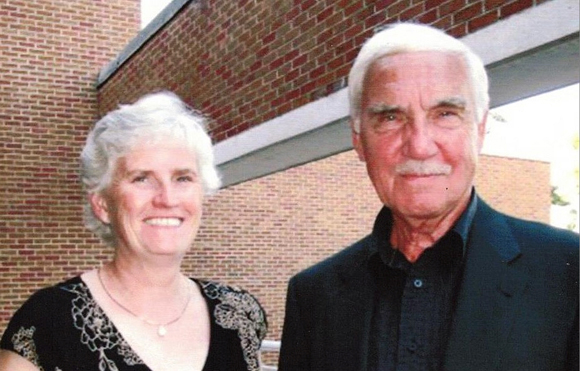 They say a man's life can be judged by the number of friends he has... This man has a lot of friends! You are one among many. So please join me in wishing Ilmar, my sweet husband, a very HAPPY BIRTHDAY! And just maybe he'll play us a tune, on this old accordion. |
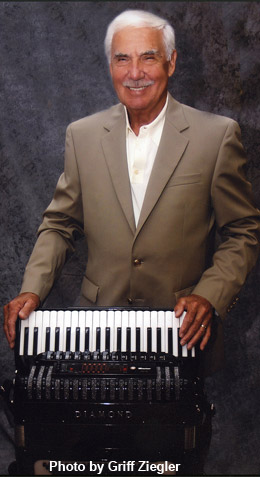 This old accordion was the prized possession of a modest innkeeper, who lived with his bride deep in the woods of a tiny country in the far north of Europe. It is a century old, maybe older.
This old accordion was the prized possession of a modest innkeeper, who lived with his bride deep in the woods of a tiny country in the far north of Europe. It is a century old, maybe older.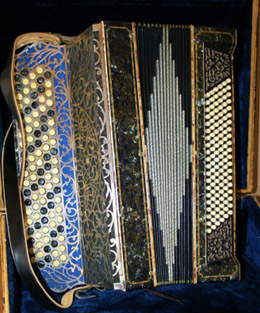 This is the accordion (picture right) that was placed on the arm of the sofa in the old log house, so the little boy of six could nestle in behind it and begin to find the notes and learn to make the sounds, just like his papa. The boy was gifted not only musically, but academically, as well. He gained entrance to the finest school in the capitol city and rode the train there every day from his small village. He learned five languages and studied piano at the end of the school day. Life, in many ways, was idyllic, but storm clouds were gathering over his small country.
This is the accordion (picture right) that was placed on the arm of the sofa in the old log house, so the little boy of six could nestle in behind it and begin to find the notes and learn to make the sounds, just like his papa. The boy was gifted not only musically, but academically, as well. He gained entrance to the finest school in the capitol city and rode the train there every day from his small village. He learned five languages and studied piano at the end of the school day. Life, in many ways, was idyllic, but storm clouds were gathering over his small country.